ION Max LP Turntable Hands-on Review
The ION Max LP Conversion Turntable is not your uncle’s turntable…though maybe it should be! The ION Max LP turntable is a simple record player specifically designed for taking that vast record collection left over from your childhood and rockin’ teens and 20’s and converting it into digital tracks for easy access and upload to all your digital devices.
When I was a kid, records were on their way out. I had a large “all-in-one” stereo system—complete with flashing colored lights timed to the music. It had a turntable, an 8-track, and a tape player. But that didn’t last long. I got my first CD player in 7th grade (it also had a tape player). After that day, I don’t remember ever receiving another record as a gift, and I certainly didn’t buy any…until I was about 35. What an amazing turn of events! Whereas 8-tracks and tapes are seen as relics collecting dust in your local “vintage” store (and CDs are not far behind them), ever-more convenient and accessible digital media dominates how we procure and listen to music. Still, records continue to be with us—carving out a niche in the cultural landscape like the little grooves that swirl around the black disk itself. Exploring that phenomenon is not my job here. But seeing how ION’s $99 USB-equipped turntable seeks to make its own groove in that digital revolution is.
The Ion Max LP turntable is very simplistic as an audio device, but it also looks good. The table surface is made with a wood-grained veneer, so it blends nicely with most furniture. Placed near the front corners are a pair of 2-inch stereo speakers. Of course, these are not going to provide you with an elegant and nuanced listening experience, but they work well as a small monitoring system if you’re using the player with a computer and don’t have any external speakers. Volume is controlled by a small rotary knob on the front of the unit. The ION Max LP also has an 1/8-inch headphone jack located right on the front (also controlled by the volume knob) and stereo RCA outputs on the back for connecting the player to a more robust audio system.
The unit plays 78s, 45s (it comes with an adaptor for these) and 33s. It has an “autostop” switch that automatically turns the platter on when you lift the tonearm over the record and turns it off when the tonearm reaches the end of the disk. The tonearm itself is completely manual, with a single lever for raising and lowering the arm so you can set the stylus down delicately. This area is covered by a clear plastic dust cover, allowing you to protect the record and still listen to the music (the speakers aren’t covered by the plastic shield). The player also has an 1/8-inch Aux input on the back for connecting a cassette player or other legacy device, letting you use the Max LP turntable as a quasi-interface to record from other audio sources.
The cartridge and stylus come pre-installed, with a small plastic cover for shipping protection. Apart from removing that cover, all that’s needed to get this player up and running is to remove the twist tie from the tonearm and connect the power supply. The dust cover also comes disconnected in the box but easily snaps right on to the hinges. After that, you just hit the power button on the back, put on your favorite disk, plug in headphones (or connect to your stereo), drop the needle, and sit back and listen.
The design of this unit, however, is not simply for listening to your records—as the title “Conversion Turntable” suggests. After getting it set up, I pulled out the provided installation disk and USB cable to check out the digital conversion process. I was pleasantly surprised at just how simple it was.
Recording Records to a Hard Drive with ION Audio Max LP
Once you’ve got the software installed (ION provides a manual with step-by-step instructions for both PC and Mac, and you can also download the software from ionaudio.com), plug in the provided USB cable. After finishing the installation and opening the software, you’ll be guided step by step through the process of recording your vinyl or other audio source into digital tracks.
The first step asks you which audio source your using. The second step provides you with your first look at whether you have everything set up correctly. On this screen, a digital meter tells you whether the computer is hearing your record. You can start playing the record and adjust the gain/input level to make sure your tracks sound good. You can also choose to manually determine the split between tracks or let the software do it for you. Once you’ve done that you’re ready to record.
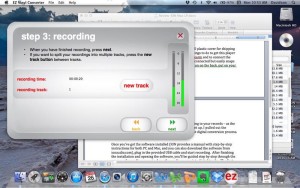 The recording process is an opportunity for you to sit back and listen. The software records each track in real time, listening for the silence in between and starting a new track where appropriate. I was impressed with this auto-split feature, though it has its limitations as it requires silence long enough between tracks for the software to determine where to start a new track. If you know the tracks move seamlessly between songs, you’ll want to use the manual split feature so you can decide when to start a new track, but you’ll have to remain an active listener! Also, if you’re recording with the auto-split feature, when that side of the record is done the software will start a new track because of the silence at the end and will continue recording until you click “next”—even if the disk has stopped moving. This means that unless you catch the recording process before the software moves on to a new track you’ll have a track of silence to delete from iTunes when you’re done. Not a tragedy—just don’t walk away from your recording process for an hour!
The recording process is an opportunity for you to sit back and listen. The software records each track in real time, listening for the silence in between and starting a new track where appropriate. I was impressed with this auto-split feature, though it has its limitations as it requires silence long enough between tracks for the software to determine where to start a new track. If you know the tracks move seamlessly between songs, you’ll want to use the manual split feature so you can decide when to start a new track, but you’ll have to remain an active listener! Also, if you’re recording with the auto-split feature, when that side of the record is done the software will start a new track because of the silence at the end and will continue recording until you click “next”—even if the disk has stopped moving. This means that unless you catch the recording process before the software moves on to a new track you’ll have a track of silence to delete from iTunes when you’re done. Not a tragedy—just don’t walk away from your recording process for an hour!
Once you’re done recording, the next screen asks you for information about the record. Type in the name of the album, artist, and tracks, and hit “next” to move on to the final step. The software takes over from here, opening iTunes automatically and converting the files to the appropriate format for your iTunes configuration. Moments later it will ask you if you’re done recording. If not, you can start the process over. If you are finished, you just click “No” and then “Next”, and you’re ready to enjoy your tracks in iTunes.
All in all, this is a simple and pleasant experience for converting your records. If you’re looking for flexibility with the software, there really isn’t any. The software will send the files only to iTunes and in the format specified by your iTunes set up. For PC users, there is a note regarding file size in the manual as the files are sent as WAVs. This is better for quality but not for storage. Because of this, PC users might want to convert their files for use on other devices or to reduce how much storage your new digital tracks take up on your hard drive. Of course, once in iTunes, you can manipulate and move your files to other programs, depending on what you like to use, but this requires additional steps and know-how beyond the recording process with the Max LP.
Recording “Through” Devices
One other feature to mention is the player’s ability to act as an interface for your cassette player or other legacy audio device. Using the 1/8-inch Aux input on the back you can connect another audio device. This input gives you full access to the turntable’s features. Your audio from that device will play on the speakers on the turntable or through the output jacks, and, of course, it goes to the computer for recording. The software, during the first step, lets you determine which audio device you are using and also lets you specify the type of tape (normal or chrome) you are playing. Cool!
Conclusion
All this simplicity is ultimately an advantage as it helps determine who might get the most out of this turntable. There aren’t any bells and whistles on the turntable itself, and the software also reflects this “keep it simple and get the job done” approach. So permit me to digress as I think about the benefits and uses of this player.
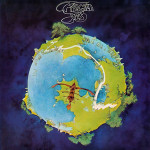 My uncle never left the grooves in the record. Growing up, I can remember the wall-o records in his living room, with the massive speakers perched high on shelves on each side of the wall. If I go to his house today, thirty years later, it looks almost exactly the same–except now there’s a little desktop computer set over in the corner next to the component stereo system and turntable. He’s not a man completely stuck in his 20’s, but he still enjoys the sound and experience of his vast record collection. His turntable and audio gear are forty years old and still in great shape. He taught me to play guitar from his Yes Fragile album (hence my choice of that record for this review!) In some ways, he has no incentive to change, but he too likes the idea of having access to all of that music in a more flexible format. He has thoughts of downsizing and rearranging his life and stuff. But he also never quite moved into the 21st century and has trouble figuring things out beyond the push-to-talk feature on his flip phone.
My uncle never left the grooves in the record. Growing up, I can remember the wall-o records in his living room, with the massive speakers perched high on shelves on each side of the wall. If I go to his house today, thirty years later, it looks almost exactly the same–except now there’s a little desktop computer set over in the corner next to the component stereo system and turntable. He’s not a man completely stuck in his 20’s, but he still enjoys the sound and experience of his vast record collection. His turntable and audio gear are forty years old and still in great shape. He taught me to play guitar from his Yes Fragile album (hence my choice of that record for this review!) In some ways, he has no incentive to change, but he too likes the idea of having access to all of that music in a more flexible format. He has thoughts of downsizing and rearranging his life and stuff. But he also never quite moved into the 21st century and has trouble figuring things out beyond the push-to-talk feature on his flip phone.
Enter the Max LP. The player itself will not replace the features and quality of traditional turntables and their modern equivalents. There’s no adjusting the tracking force or changing out the pre-amp for that pristine vintage sound. But the player worked great, and it has the required features for enjoying all kinds of records.
What makes this unit stand out is the simplicity of the interface and software. The easy install, step-by-step sequence of the recording process and even the no-frills send-it-to-iTunes approach keeps the process at the lowest common denominator for someone with little interest and know-how in the world of 21st century technology. It allows them to easily record their favorite records while sitting back and enjoying them all at the same time. It sends those files in an organized manner, using iTunes’ basic structure of Artist and Album to make the files easy to find and enjoy in the new digital environment. For these reasons (and the meager $99 price point), I think it would make a great gift for that friend or relative who just cannot part with their beloved albums. Or, if you are a casual and curious listener yourself but don’t want to have to buy the MP3’s in order to enjoy music on your tablet which you already own, this player will be a great start into the new-old world of vinyl recordings.
What this player cannot do and will never do is gloss over all those pops and skips as the needle works through the grooves. Will that be as enjoyable on your headphones while you work out at the gym? From my perspective, it depends on the music. But I don’t want to hear “Mood for a day” any other way.



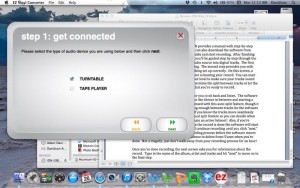


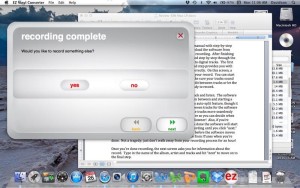
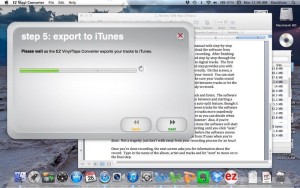
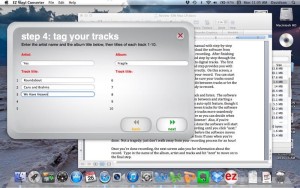
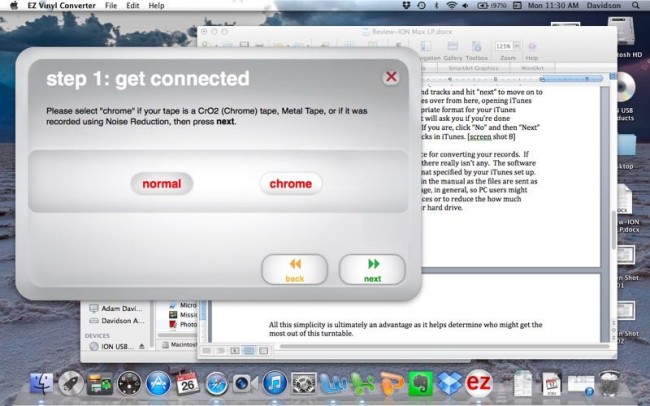


As you know, there are many usb turntables of higher quality. If going through all the trouble of converting hundreds of LP’s to digital, I would like the best quality I can afford. I hope you will consider extending your usb-turntable reviews to devices of better hi-fi quality.
I love the wooden base design to this ION, its so old school that it makes you want to keep your vinyls not convert them! 🙂
I just got one for a sweet deal of about $63.00 brand new. I have an old school Pioneer, but wanted an extra setup to play with. Thanks for the great review!
I am trying to convert my LPs to cd. Do I need a computer that will make CDs? I have my music in my computer, how do I get it on a CD?
One problem is you will not get the full range of sound that the CD is capable of producing and the price of a turntable like this will go quite a long way in buying replacements (either on CD in in downloads) for your LPs. I simply sold my collection of about 800-850 LPs (which I hadn’t played for 20 years anyway) and spent NZ$800 on a CD deck (which was originally NZ$1200).